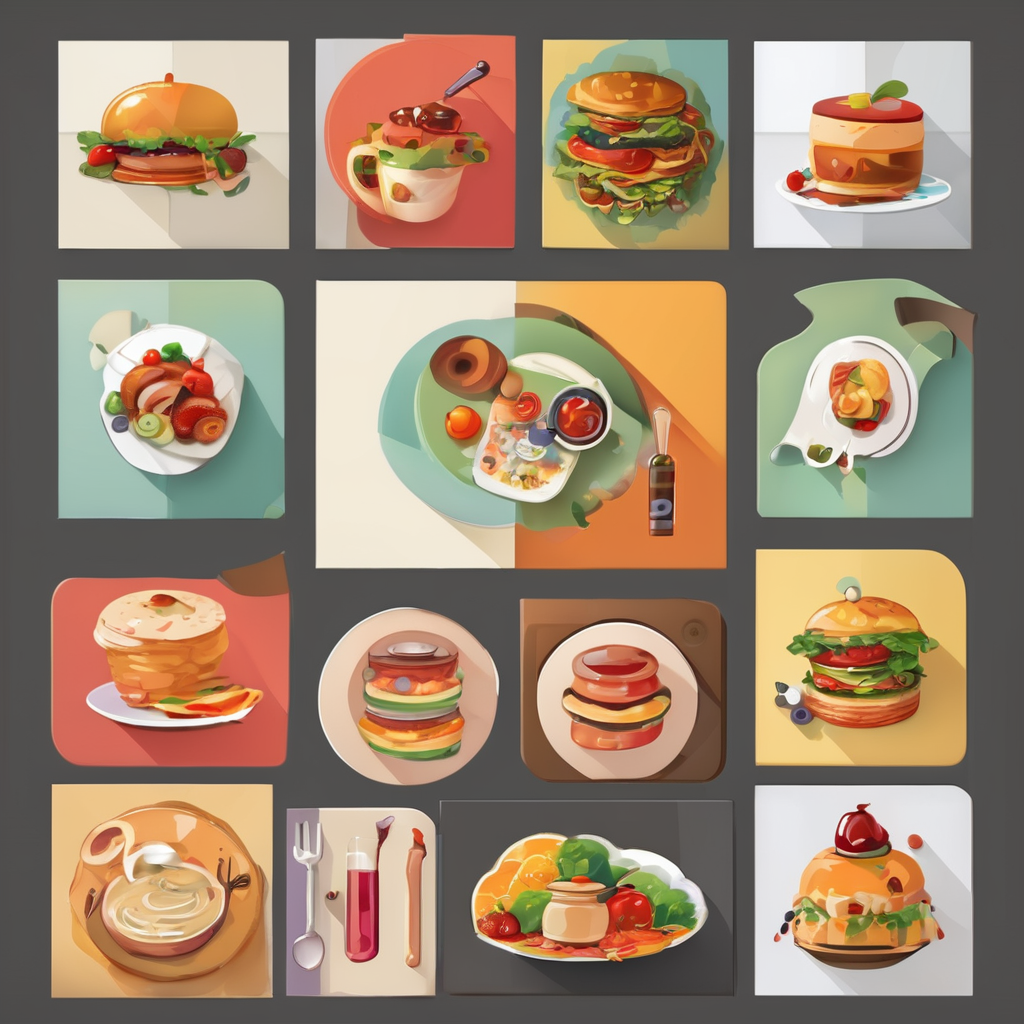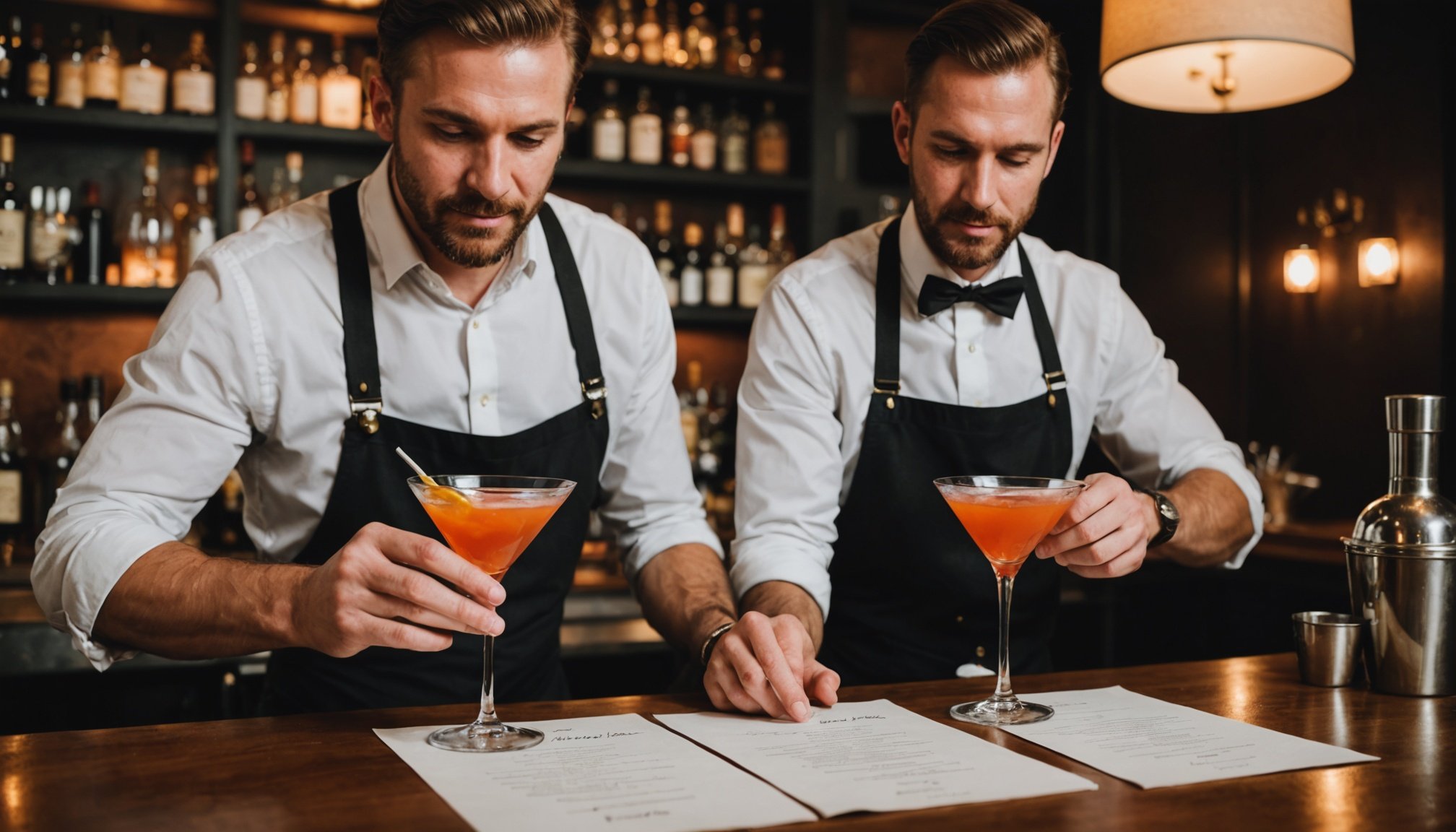Understanding the Art of Crafting Signature Cocktails
Signature cocktails hold a prestigious place in bar culture, acting as unique identifiers for establishments and experienced bartenders. These bespoke drinks are bespoke not only because of their distinctive flavors but also due to the personality they project. The craft of creating such cocktails is as much about expression as it is about taste.
At the heart of a memorable signature cocktail lies a seamless balance of flavors. Achieving this harmony requires an understanding of each ingredient’s role in the overall taste profile. For example, sweetness from fruit juices should harmonize with the acidity of citrus elements, avoiding overwhelming bitterness. Bartenders often leverage the principle of balancing sweet, sour, bitter, and salty notes to craft cocktails that are not only flavourful but also refreshing.
Additional reading : Eco-Chic Nightlife: How Bars Can Keep the Vibe Alive with Green Practices
Aromatic elements can contribute to a cocktail’s overall experience. Herbs like mint or basil, and spices such as cinnamon or star anise, transform the ordinary into the extraordinary, offering multi-layered tasting experiences. The precise blend and balance of these components ultimately define the drink’s character and memorability, elevating it from a mere beverage to a work of art. Through thoughtful cocktail crafting principles, one can truly convey an unforgettable drinking experience.
Flavor Combinations and Innovations
In the dynamic world of mixology, flavor pairing is an art that marries traditional recipes with modern twists. Classic combinations like gin and tonic provide a solid foundation for innovation. By introducing unique cocktail ingredients such as elderflower liqueur or yuzu juice, bartenders can transform a standard drink into an extraordinary experience. For instance, adding a hint of smoked salt can elevate a margarita, offering a nuanced depth to its profile.
In the same genre : Mastering Pristine Draft Beer Lines: Expert Tips for Flawless Craft Brewery Maintenance
Leveraging seasonal fruits and herbs can also infuse cocktails with a refreshing vitality. Ingredients such as fresh mint in summer mojitos or winter-spiced cranberries in holiday punches showcase flexibility and creativity. This approach not only celebrates nature’s timing but also captivates patrons seeking new experiences.
Innovative mixology techniques like fat-washing or molecular mixology allow bartenders to experiment with texture and aroma, creating signature cocktails that could become the hallmark of their respective venues. Whether incorporating herbs through sous-vide infusion or creating foams for a playful presentation, these techniques bring a fresh perspective to cocktail crafting. Ultimately, embracing innovation while respecting classic flavors helps bartenders craft memorable and unique drinking experiences.
Presentation Techniques for Visual Appeal
Visual appeal plays a crucial role in cocktail presentation, enhancing the overall drinking experience. The glassware choice can dramatically alter how a cocktail is perceived. For instance, a sleek martini glass might underscore sophistication, while a rustic mason jar evokes a laid-back vibe. Selecting the right glassware ensures that the drink matches the intended ambiance and style.
Garnishing techniques contribute not just to aesthetics, but also to taste. Creative garnishes, such as a sprig of rosemary in a gin-based cocktail, both enhance flavours and captivate the senses. A twist of lemon can add a vibrant zest, while edible flowers provide an elegant visual touch. Crafting garnishes with precision complements the cocktail’s character and completes its artistic presentation.
The interplay of color and texture is equally vital in cocktail presentation. Incorporating colourful elements like berries or citrus not only creates an eye-catching appearance but also signals the vibrancy of the drink’s flavours. Additionally, thoughtful layering or frothy textures can add depth and intrigue to the presentation. By focusing on these aspects, bartenders can transform a cocktail into a memorable visual masterpiece.
Customizing Cocktails for Individual Preference
Cocktail customization creates opportunities to deliver an unforgettable personal experience. Encouraging guest interaction in selecting and designing their drinks not only makes patrons feel valued but also ensures the resulting cocktails reflect their distinct preferences. A friendly consultation can help uncover whether they prefer a drink with a floral note or something robust and smoky.
By suggesting variations on existing signature cocktails, bartenders can introduce guests to new taste experiences while maintaining a familiar baseline. For instance, offering to swap out traditional lemon juice with lime can subtly shift the flavour profile without changing the cocktail’s essence.
Balancing these personalisations with popular trends helps bartenders stay relevant and appealing to a broader audience. Using new ingredients and methods like craft bitters or smoked infusions can enhance traditional drinks, making them trendy yet personal.
Adding a personal touch to a cocktail isn’t just about ingredients; presentation plays a vital part. Asking guests about their preferred garnishes or glassware can further personalise the experience. This approach not only enriches the drinking experience but also builds a sense of customer loyalty, enticing guests to return for more curated cocktails.
Seasonal Cocktails: Inspiration and Ideas
Crafting seasonal cocktails offers the dual benefit of freshness and thematic alignment with holidays. By tapping into local ingredients, bartenders can accentuate the natural flavors inherent to each season. For example, autumn might inspire concoctions featuring apple cider or pumpkin spice, while summer could lead to refreshing drinks with watermelon or cucumber. This approach not only highlights flavor trends but also provides a unique twist to the cocktail menu, setting it apart from year-round offerings.
Developing a menu rotation strategy is key to keeping offerings dynamic. Rotating cocktails with the seasons provides patrons with new experiences and encourages frequent visits. Incorporating seasonal drinks allows bars to adapt to changing customer preferences and weather conditions, contributing to an enhanced patron experience.
To truly embrace seasonality, consider creating holiday drink recipes that evoke the spirit of celebrations. Think warming eggnog for winter or refreshing tropical blends for summer holidays. This can be further accentuated by leveraging appropriate garnishing techniques and glassware, resulting in visually appealing and thematic presentations. Seasonal cocktails, enhanced by festive embellishments, capture the essence of time and place, transforming a simple sip into an experiential journey.
Branding Your Cocktail Experience
Creating a memorable cocktail branding strategy can set your establishment apart in the competitive bar landscape. A cohesive theme is vital, focusing on a signature style or unique approach to cocktail crafting. This could involve aligning drinks with the bar’s overall aesthetic or embracing a specific theme that resonates with your target audience.
The importance of storytelling in cocktail menus cannot be overstated. By weaving engaging narratives into drink descriptions, bars can establish a strong brand identity. This storytelling approach not only engages customers but also adds depth to their drinking experience, making it more than just about the flavors.
Moreover, incorporating striking visual elements strengthens your cocktail branding. Thoughtfully designed menus with artistic flair and curated illustrations can enhance the visual appeal and reinforce the bar’s identity.
By prioritising storytelling and cohesive design, bars can transform their beverage offerings into unique experiences.
With a deliberate branding strategy, bars can forge a powerful connection with patrons, encouraging return visits and word-of-mouth marketing. Ultimately, this approach enriches the overall customer experience, distinguishing the bar’s narrative as much as its signature cocktails.
Staying Inspired: Resources and Communities
For those involved in the craft of mixology, ongoing education and inspiration are vital. A wealth of mixology resources, including industry-recommended books and online courses, exist, catering to both novices and experienced bartenders. These resources provide essential knowledge and challenging techniques, encouraging creativity in crafting unique cocktails.
Participating in cocktail communities offers valuable opportunities for networking and idea exchange. Dedicated forums and social media groups enable bartenders to discuss trends, share experiences, and gain fresh insights into innovative cocktail crafting. These communities often focus on problem-solving and experimentation, where members can learn from each other’s successes and failures.
Keeping abreast with industry trends and ongoing education also involves attending events and tastings. Such gatherings not only offer a practical understanding of emerging techniques but also foster connections with fellow mixology enthusiasts. These interactions can inspire new ideas and approaches, vital for evolving a bartender’s craft.
By leveraging these resources and engaging with established communities, bartenders can remain inspired, continuously enhancing their skills and cocktail presentations. This commitment to learning and experimentation ultimately enriches the overall drinking experience offered by their establishments.

